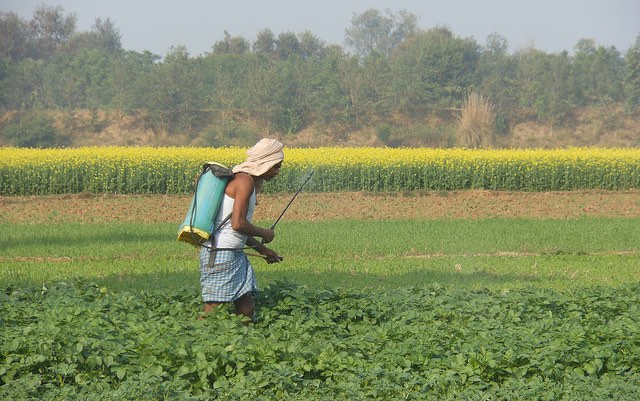Technological innovations, along with price support measures and the supply of subsidized key inputs like irrigation, fertilizer, and electricity, have played an important role in the growth of Indian agriculture. These support measures have led to a sizable increase in the area under cultivation and output of cereals in Punjab and Haryana. The procurement of food grains at pre-announced prices, followed by their distribution to consumers at highly subsidized rates through fair price shops, was perceived as an accomplishment towards stabilizing prices, achieving farmers’ welfare, and ensuring food security across the country. This deliberate attempt to keep commodity prices low and compensate farmers for the loss by charging them input prices below market prices continues—though, of late, eyebrows are being raised on the effectiveness and efficiency of this particular policy instrument.
The arguments against subsidies rest on the grounds of the enormous fiscal burden they impose on the government; diminished marginal returns in terms of farm productivity and price distortions; the overuse of inputs that adversely impact natural resources; and the unequal distribution of subsidies across states and farmers.
The latest example is farm loan waivers, which have hardly benefited marginal farmers. Critics reiterate that input subsidies have outlived their utility, and suggest considering their rationalization, if not complete withdrawal. But these concerns must be weighed alongside the economic reality of ever-increasing input prices compared to the output prices, which have risen only mildly—making farming highly unprofitable. Mass protests by farmers are a manifestation of this squeeze in their incomes, and a crisis situation.
A policy shift from price to income support under the Direct Benefit Transfer (DBT) program is deemed better as it would incentivize farmers as money is transferred to their bank accounts and bring in much needed efficiency in input use.
The government has already initiated a new type of fertilizer support program in the form of pilots in 14 states, in which farmers make purchases at subsidized rates from input dealers using their Aadhaar identity cards for authentication at the point of sale. The payment on account of subsidy is credited to fertilizer companies only after the retailer has completed the sale using a dedicated electronic device. The government has allocated $9.9 billion per year for this purpose. One may not be sure whether implementation of this scheme and the cost of building infrastructure and e-machines would save government resources, but it is expected to reduce leakages, and provide information on trends in fertilizer purchase and, hence, its consumption. The government footed a bill of $10.3 billion on fertilizer subsidies during 2014-15.
We feel that direct subsidy transfers to farmers may be much more advantageous compared to this ongoing scheme. Using the data from the All India Debt and Invest Survey of the National Sample Survey Office (2012-13), we have estimated the percentage increase in input price in a situation of complete withdrawal of subsidy, and the resulting impact on agricultural output. This is taken to represent loss in net agricultural income due to the reduction in consumption of unsubsidized input, thus providing a case that the same amount be directed towards cash transfers in the form of income support. The exercise is based on elasticity of output with respect to fertilizer consumption and the latter’s response to its respective price. Our study reveals that a reduction in fertilizer subsidy will result in an almost 12 percent decline in agricultural output at the national level (changes in demand, price of output, and other factors remaining the same).
The estimated amount that the government would have to transfer to farmers to maintain the same level of output and avert income loss is $74 per hectare during 2017-18, with considerable variation across different states. It varies from $18 per hectare in Chhattisgarh to almost $142 per hectare in Haryana, depending on fertilizer use and its responsiveness to own price and output in each state. For each year, the cash transfer can be assessed based on the ongoing rate of inflation and the optimum mix of fertilizers and their respective prices.
One may not be sure how much DBT to farmers would save in terms of government resources, but the benefit is guaranteed to reach them—which is not the case now. Farmers, without undergoing the hassles of authentication, would be able to make independent decisions on the application of fertilizers. Besides, DBT will help in reducing the transaction cost in the creation of digital infrastructure, the burden of retailers to maintain records, and errors that often appear in use of the Aadhaar card. Such an income support measure would be financially sustainable in the long run, and also fully compatible with the WTO provision on domestic support (as India is often warned it has reached the upper limit of agricultural support at 10 percent of the value of farm output).
Along similar lines, the cash transfers for irrigation and energy (for withdrawal of groundwater through tube wells) can be worked out in each state. The government can also work on a policy of redistribution or reallocation of input subsidies from agriculturally-advanced states to poor and low land productivity states to incentivize small and marginal farmers. It goes without saying that for DBT to function effectively, the government must update land records and develop mechanisms to extend support to tenants and women farmers deprived of land titles.
Seema Bathla is a Professor of Agricultural Economics at Jawaharlal Nehru University; Anjani Kumar is an Research Fellow with IFPRI’s South Asia Region in New Delhi. This post first appeared in the Financial Express.







